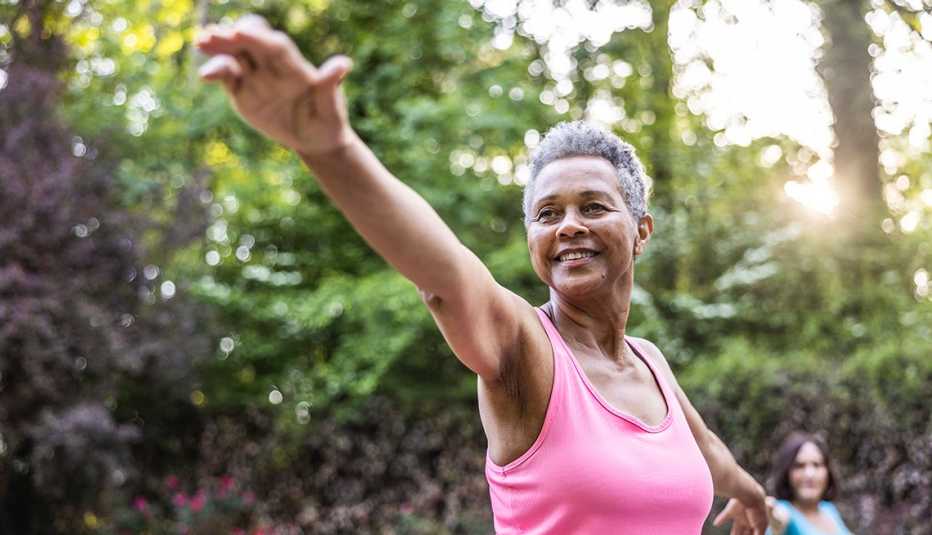AARP Hearing Center


For all the focus on looking and feeling fit, it would be easy to miss how much of a boon exercise is for mental health.
Besides increasing muscle tone and endurance, cardio and strength training can, quite literally, change your mind. Research finds that regular physical activity can essentially make your brain more nimble, even enhancing the organ’s ability to form neural connections so you’re better able to handle everything coming at you.
Although there are many mysteries about the body-mind link, what’s clear is that whether you’re running, swimming or lifting weights, exercise can bolster your mental health in many dynamic ways. Here are seven:
1. Changing your brain
If you’ve ever felt like you were firing on all cylinders after a workout, you might be benefiting from the way workouts can change your brain.
By being active, you can support cellular growth in the brain and make more of those neural connections. Exercise enhances all of this neuroplasticity, explains Abigail Norouzinia, senior instructor and psychologist with the University of Colorado Anschutz Medical Campus in the Department of Psychiatry. And it improves brain function, as a 2020 review of research in animals and human found.
That can make a person better equipped to respond to setbacks and adapt. This new growth in the brain is important to help us learn things, which is so important in therapy, Norouzinia says. “Because what we’re doing in therapy is we’re helping people learn to think ... [and] behave in new ways.”
2. Boosting your mood
Exercise can also improve a person’s mood in a hurry.
“There’s immediate changes that occur in the brain,” says Ben Singh, a research fellow in physical activity at the University of South Australia, Adelaide.
Singh led a research review published in February 2023 in the British Journal of Sports Medicine that found exercise was “highly beneficial” in reducing symptoms of depression, anxiety and distress. In part, that’s because being physically active leads to an infusion of feel-good hormones in the brain. “It can increase endorphin release,” Singh notes, and raise serotonin and dopamine levels as well.
3. Helping with emotion regulation
Of course, quickly emptying a bag of candy might boost your mood, too. That is, before the sugar crash. What makes exercise any different? What’s to keep this mood enhancer from becoming a mood tease?




































































More From AARP
3 Stress-Reduction Techniques
Try these relaxation methods to ease stress and nourish the body at AARP® Staying Sharp®
Time Outdoors Might Lower the Use of Certain Medications
This is how long you should spend in nature each day to boost your wellbeing
Many Adults Should Be Screened for Anxiety
The new recommendation comes amid growing mental health concerns